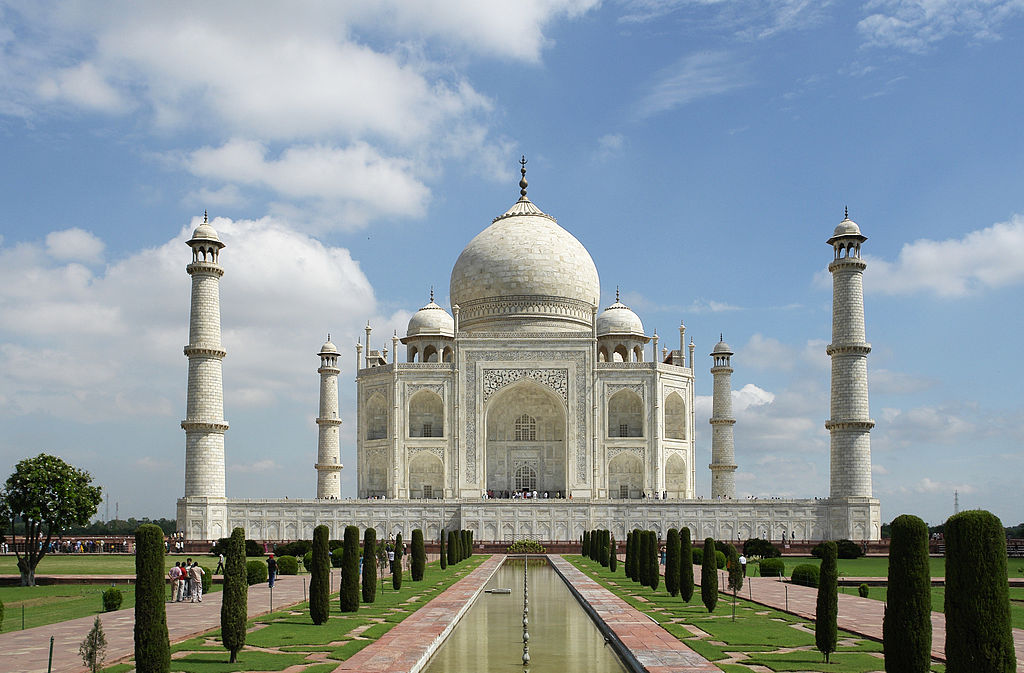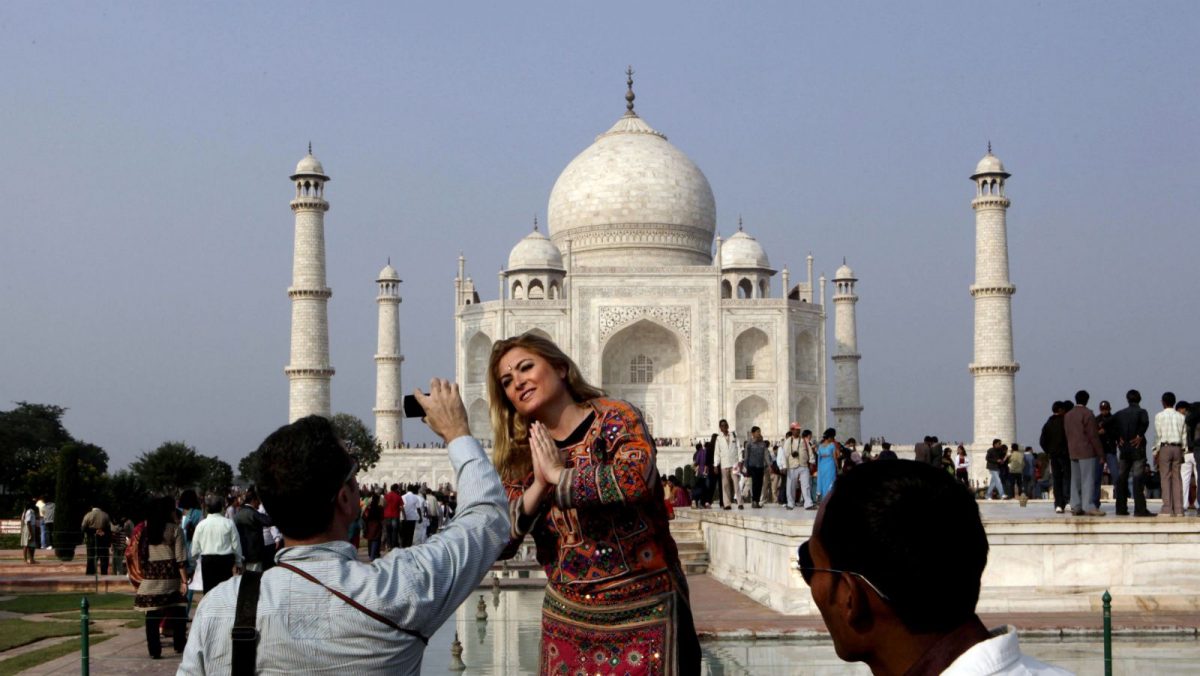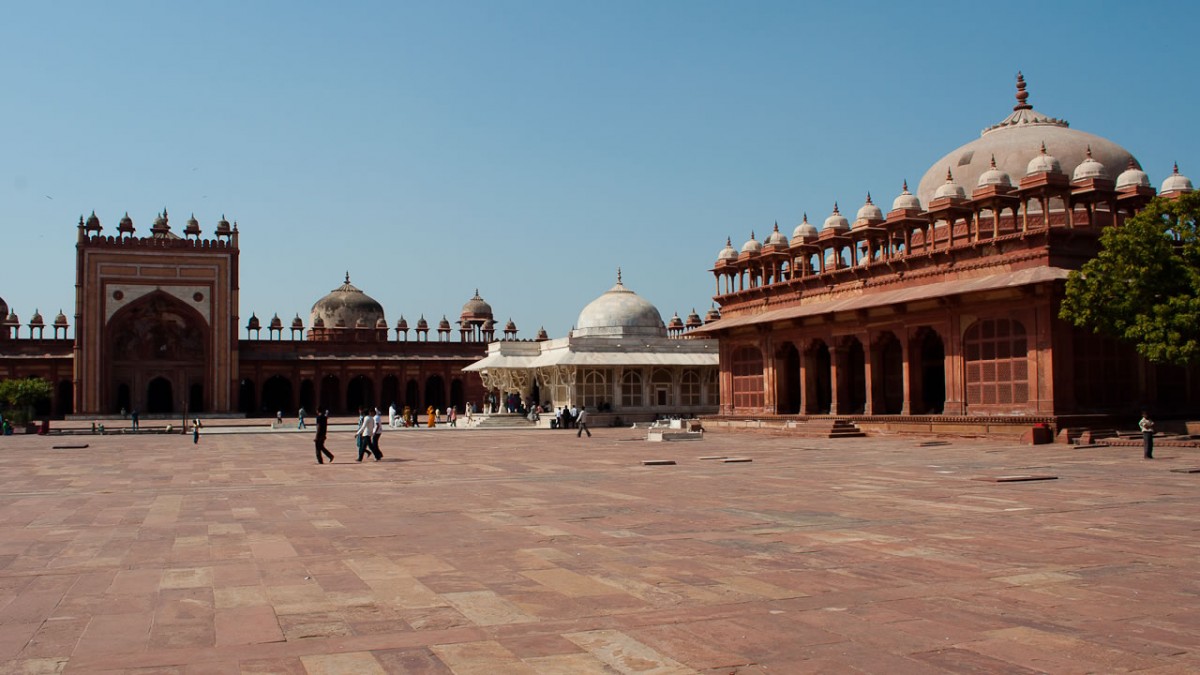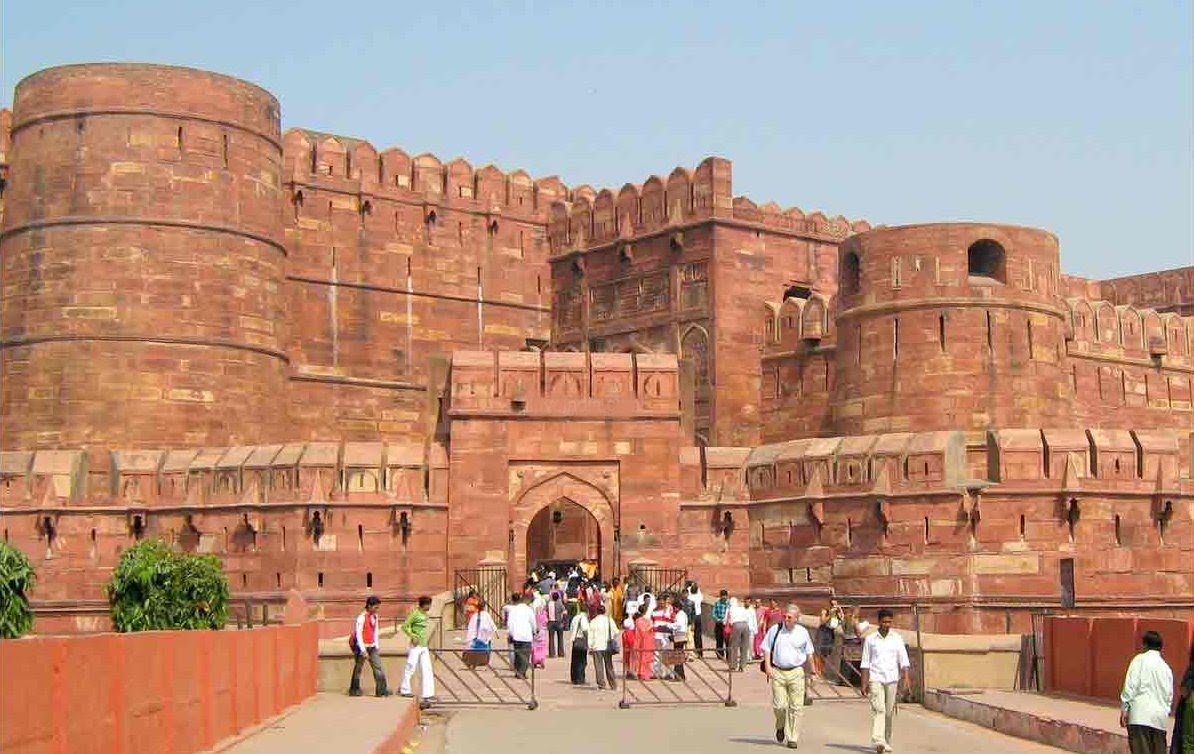
Agra Fort
The Agra Fort is situated on a bank of the River Yamuna in Agra. It was built during the years 1565 and 1574 by the Mughal Emperor Akbar the Great. Later, his grandson, the Mughal Emperor Shah Jahan, added to the palaces andAgra Fort structures within the fort. The Agra Fort has a mighty wall made of red sandstone, which runs for 2 ½ Kilometers around the perimeter of the fort. The main entrance to the Agra Fort is through a grand gateway called the Delhi Gate, which is decorated with inlay work in white marble. The Agra Fort is partially occupied by the Indian Army and sections of the fort are restricted for tourists. There is another entrance through which tourists can enter; this is called the Amar Singh Gate. After entering the Agra Fort, you will find yourself in the grand courtyard. The Diwan-i-Am or Hall of Public Audience and Diwan-i-Khas or Hall of Private Audience are located within the fort
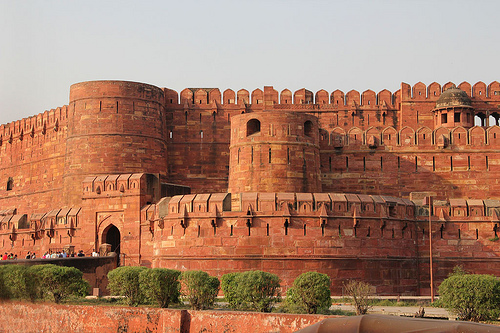
and contain examples of exquisite Mughal carvings on their many pillars. There are grand palaces, such as the Khas Mahal and the Shish Mahal, within the Agra Fort. The rooms in the palaces within the Agra Fort were kept cool by an ingenious system of water channels that ran through all the rooms keeping them cool as the water evaporated. The high ceilings and marble latticed screens also provided natural cooling and blocked out the intense rays of the sun.
The mosques, Nagina Masjid and Mina Masjid, within the Agra Fort, were used by the royal family and the Mughal courtiers for prayer services and the Mina Bazar was a small market where the ladies of the Zenana could shop for perfumes, clothes, cosmetics, and jewellery. There are formal gardens with flowering plants and fruit trees in between the palaces within the Agra Fort.

